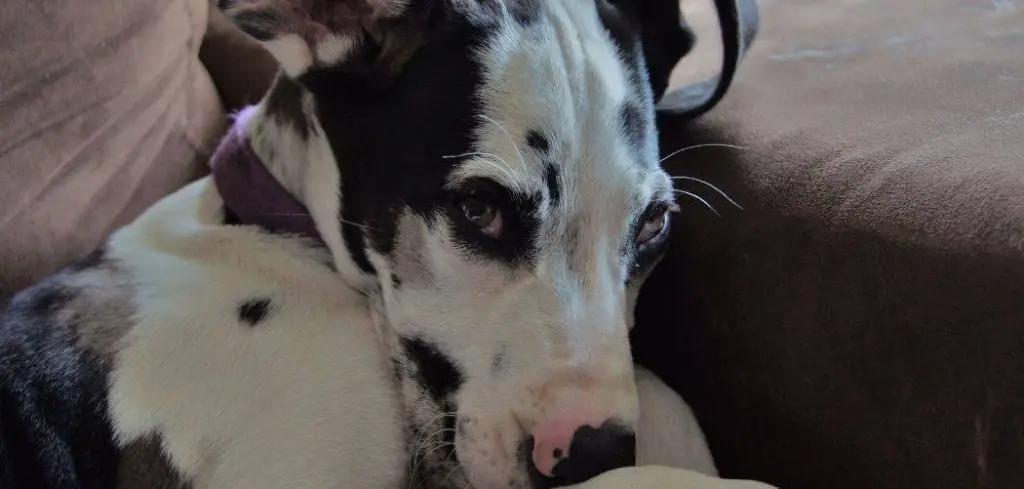Seeing mucus in a dog’s poop is already concerning, but when it is linked to pancreatitis, it becomes even more serious.
Pancreatitis is a painful and potentially life-threatening condition that can affect a dog’s digestive system and cause unusual stool changes.
One of those changes may include mucus in the stool, a signal that the intestines are irritated and inflamed.
We outline the reasons for mucus in the poop of a dog with pancreatitis, what you can do at home, and when to seek veterinary help.
Mucus in Dog Poop and Pancreatitis — Why It Happens
Mucus in a dog’s poop can occur when pancreatitis inflames the digestive system and disrupts normal digestion. Dogs with pancreatitis often experience diarrhea, abdominal pain, and poor absorption of nutrients, which irritates the intestines and may lead to mucus being passed in stool.
The pancreas plays a central role in producing enzymes that help break down food, and when it becomes inflamed, the gut responds with stress signals such as mucus production.
Dehydration, poor diet, infection, and stress can worsen this condition, making mucus in the stool more noticeable.

Mucus in Dog Poop and Pancreatitis: Common Causes
Pancreatitis Itself
Pancreatitis is the most direct cause of mucus in a dog’s stool. When the pancreas becomes inflamed, the digestive tract struggles to handle food properly.
This often results in diarrhea, sometimes accompanied by mucus, as the intestines work harder to protect their lining.
Owners may also notice vomiting, lethargy, and abdominal pain. Left untreated, pancreatitis can become life-threatening.
Read more: Mucus In Dog Poop and Cancer (Here’s why)
Digestive Tract Inflammation
The inflammation caused by pancreatitis does not remain confined to the pancreas. It often spreads to the intestines, triggering colitis or enteritis.
The intestinal lining responds by producing mucus, which appears in the stool as a slimy or jelly-like coating.
This is the body’s attempt to protect irritated tissue but is also a red flag of digestive distress.
Dietary Indiscretion
One of the leading causes of pancreatitis is eating fatty or inappropriate foods. When a dog consumes something high in fat or difficult to digest, the pancreas must work harder to produce enzymes.
This strain can trigger inflammation, which in turn leads to diarrhea and mucus in the stool. Dogs who raid the trash or eat human food are at higher risk.
Infections and Secondary Illnesses
Dogs with pancreatitis may be more vulnerable to intestinal infections, as their digestive system is weakened.
Bacterial or viral infections can worsen inflammation and lead to additional mucus in the stool. In these cases, stool may also contain blood or show changes in consistency.
Dehydration and Electrolyte Imbalances
Pancreatitis often causes vomiting and diarrhea, which lead to dehydration. When the intestines are dehydrated, they produce more mucus to help lubricate stool movement.
This creates the slimy coating seen by owners. Without treatment, dehydration can quickly become dangerous, worsening both pancreatitis and digestive symptoms.
Stress on the Gut
Dogs suffering from pancreatitis experience physical stress, which also impacts the digestive system.
Stress hormones can alter how the gut functions, slowing or speeding digestion. This can increase the likelihood of mucus in the stool as the intestines try to protect themselves from irritation.
What to Do If Your Dog Has Mucus in Their Poop and Pancreatitis
If a dog is diagnosed with pancreatitis and mucus appears in the stool, the best approach is supportive care guided by a veterinarian.
Ensuring the dog stays hydrated is essential, as fluid loss can be severe. Offering bland, low-fat meals in small amounts may help reduce stress on the pancreas and intestines.
Rest and careful monitoring are also important to allow the digestive system to recover. Avoid giving rich treats, table scraps, or fatty foods, as these can worsen inflammation.
Over-the-counter remedies should never be used without veterinary approval, as they may mask symptoms or cause harm.
When to Call or Visit Your Vet
Mucus in stool combined with pancreatitis should always be taken seriously. If a dog shows persistent vomiting, abdominal pain, diarrhea with mucus or blood, refusal to eat, or lethargy, immediate veterinary attention is necessary.
These signs indicate that the pancreatitis may be severe or complicated by additional illness. Veterinary care may include IV fluids, pain relief, anti-nausea medication, and specialized diets.
Early treatment significantly improves recovery chances and reduces the risk of long-term damage.
Read more: Mucus in Dog Poop After Changing Food (Here’s Why)
Key Takeaway
Mucus in dog poop and pancreatitis are closely linked, as the inflammation from pancreatitis often extends to the digestive tract.
While seeing mucus in the stool can be alarming, it provides an important signal that the body is under stress.
Pancreatitis requires prompt attention, as it can quickly escalate into a life-threatening condition. With early veterinary care, proper diet management, and supportive treatment, many dogs recover and return to their normal routines.
If you notice mucus in your dog’s stool along with symptoms of pancreatitis, it’s best to contact your veterinarian without delay.
